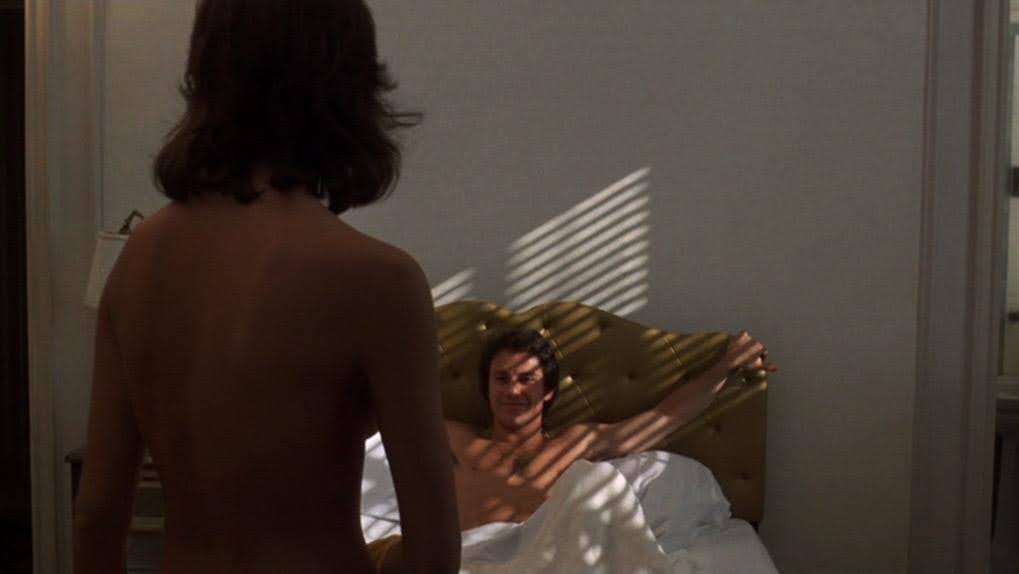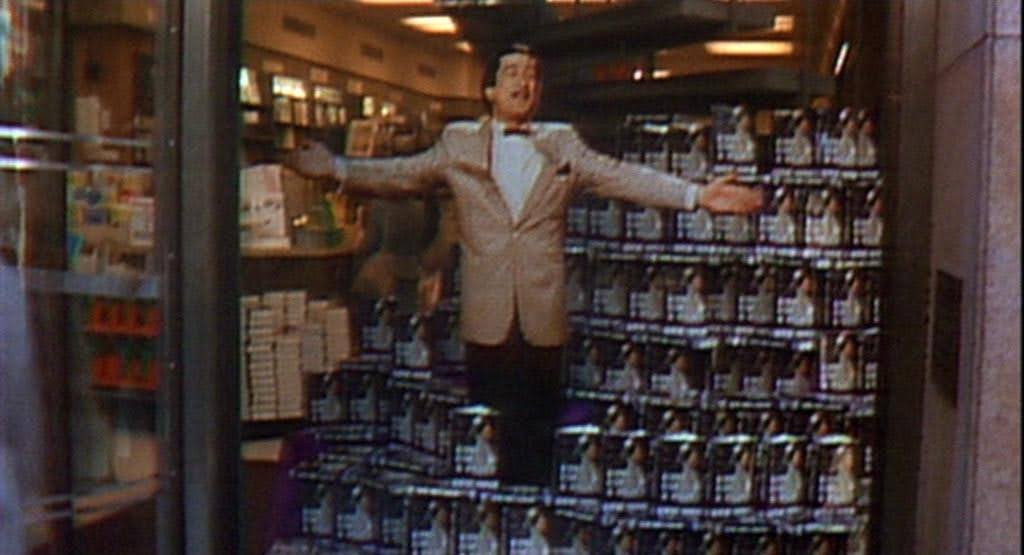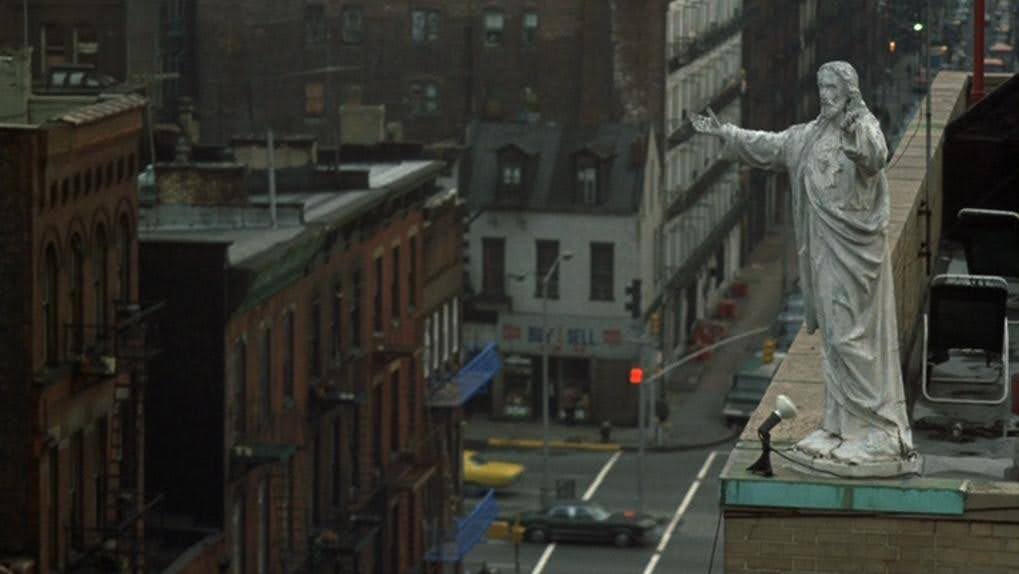| Ryan Sanderson |

Goodfellas plays at the Trylon Cinema from Sunday, August 25th, through Tuesday, August 27th. Visit trylon.org for tickets and more information.
I didn’t fall for Scorsese initially, the same way I did for his contemporaries. Raging Bull left me cold. I hated the characters in Goodfellas too much to really latch on. Make no mistake—I encountered plenty of toxic masculinity in adolescence, just a brand that disguised itself a little better than Scorsese’s raging masculine ids. Then, a few years ago, I watched all of Scorsese’s narrative features over the course of about two months. A big project like that can go one of two ways—now, decisively, I’m back in step with the plurality of cinephiles who consider him probably the single defining artist of his generation of filmmakers.
When I considered what I could add to a conversation about someone who’s been at the forefront of cultural dialogue for more than half a century, the one answer I came back to (aside from “Probably nothing”) was the feeling I had at the end of that marathon—these movies are all talking to each other, and the conversation they’re having is fascinating.

When you take an artist’s whole body of work in succession like that, you cannot help but notice patterns. This is especially true of Scorsese, who vocally works his personal obsessions and attitudes into his films more than the vast majority of filmmakers–maybe more than any filmmaker ever with his level of Hollywood studio success. On New York, New York, he said, “We didn’t know if [the characters’] marriage was going to work, because we didn’t know if our own marriages were working” (Thompson, 72). Scorsese had more reverence for classic cinema than many of his Movie Brat contemporaries, but the creative spirit of the era was improvisational and personal to a fault—he held that confessional European art house revolution ethos through five decades in Hollywood like the missionary and the cross at the end of Silence. His recent string of late-era masterpieces (his best, IMO) shows just how hard he worked to maintain that impossible marriage.
The occasion for this piece is Goodfellas, and ultimately I want to focus on the late eighties and early nineties–a distinct era of Scorsese’s career–but this point is probably best expressed by his first two feature films: Who’s That Knocking at My Door—an earnest, experimental, nearly autobiographical student film made and released purely for the art, with no commercial prospects; and Boxcar Bertha—a trashy knockoff of Bonnie and Clyde, made solely for Roger Corman’s trash horror audience. Neither film is Pure Scorsese Cinema as we’d define it today. They represent opposite poles of his immense ambitions, like Jesus and the Mafia, like large Italian immigrant families and the isolation of modern American life. The difference between the two is more about necessity and experimentation than intention, but one enduring feature of the late 60s/70’s golden age that birthed Scorsese is all the ways they tried to blur the difference between those forces.

We watch those ambitions marry in his next two features—Mean Streets and Alice Doesn’t Live Here Anymore—which nevertheless contrast each other in equally distinct ways. Mean Streets is one of cinema’s greatest depictions of masculine relationships, Alice is Scorsese’s most women-centric film. Mean Streets depicts the New York of Scorsese’s adolescence, Alice spans the American west, where the newly-minted Hollywood auteur was beginning to make a home. Mean Streets was a watershed moment for cinematic depictions of youth, Alice is about the necessary compromises made by pragmatic, exhausted adults.
Scorsese inherited Alice from the stack of scripts offered in the wake of Mean Streets. By his own admission, he chose the project as a contrast to its predecessor. “[The] head of production at Warner Brothers… thought it was a good one for me to do: nobody would expect it from me… I thought it was a good idea too, dealing with women for a change…” (Thompson, 49). While Mean Streets was autobiographical and experimental, winning audiences over with its pop music score and gangster movie elements, Alice was a more straightforward studio film with Scorsese flourishes worked in. But both are unquestionably the work of the same filmmaker, in a way that their predecessors were not.

I’m not saying forging an identity as a studio auteur was ever easy, but you can see a throughline in all of Scorsese’s films up to The King of Comedy. He was exactly the right guy in exactly the right place, bringing Bergmanesque idealism to a system that accommodated (white, male) idealism for a brief and fragile moment. He was an argument for the moment, someone who would have never been there before, doing it in a way nobody else would have ever done it.
But once King of Comedy flopped, things got more complicated. If the first act of Scorsese’s career was about the rise from the New York streets to the heights of artistic achievement, the second act was about protecting that vision as the system that made it possible collapsed. Audience tastes changed. Studio tolerance for artistic experimentation evaporated. If you enjoy film history, you probably know most of this. Scorsese’s story is a perfect microcosm of the story of American film in total, almost as though it were a Martin Scorsese film.

Scorsese spent the eighties trying to make The Last Temptation of Christ, a film that, not coincidentally, came immediately before Goodfellas. And once again you have these two perfect, opposite eidolons of artistic expression. One, the definitive cinematic depiction of virtue in the most prominent American figure, Jesus; the other, the ultimate depiction of American sin. One film got a theater burned down and required Scorsese to travel with bodyguards for several years, the other is probably playing on TNT right now. One film sparked widespread controversy for years, the other wheedled its way into the cultural canon in a way no Scorsese film ever had. No two films better showcase the divide, artistic and cultural, between sacred and profane. In one, Scorsese showed the violence and cruelty and cowardice and cynicism of the world as he understood it—people were thrilled. But when he tried to nudge that world’s mythology even a degree towards the human, it sparked an uproar that nearly sunk his career.

Scorsese made Cape Fear immediately after Goodfellas—part of his trade off for Last Temptation—but I think the next film, Age of Innocence, makes for the second half of an incredible double feature. The characters in Goodfellas come from poverty, find and adapt to wealth within their lifetimes, the ones in Age of Innocence are born rich. Both exist in the same city, separated by less than a century, but they may as well occur in different universes. The characters in Goodfellas break the law and it ruins their lives. The characters in Age of Innocence obey the law, and it ruins their lives. And even if Cape Fear was part of a studio deal, note it’s own relationship between blue and white collar crime, and how it operates in a middle ground between these two extremes, the American suburbs.
As frustrating as the Scorsese v Marvel conversation can be, it’s a reminder of his continued relevance. The only other filmmaker who draws an unbroken line from the 70s revolution to our present moment is Steven Spielberg, for very different reasons. Spielberg remade Hollywood in his image. Scorsese survived despite the fact that for most of his career, the industry was always moving further away. This final act highlights the material cynicism of the modern film industry through contrast. While studios scramble for ways to train robots to write screenplays, Scorsese makes art that is, simply, not replicable. While studios disappear whole films to avoid paying residuals, Scorsese aims his work squarely for the human soul, a place David Zaslav cannot touch (for now). And now, while terminally online people demonize the founder of the World Cinema Project as elitist in defense of a mega corporation, Scorsese is compromising less than he ever did—precisely because in this moment of massive cultural change, amid the cheapening of communication, he has earned the right to stand up not just for what works in art but for what’s possible. While studios purge their inventories in search of the greatest (sometimes lowest) common denominator, Scorsese has chosen this moment to defy every trend and put up devastatingly personal, maddeningly specific four hour masterpieces, cashing in his final Living Legend coupons to remind us what’s still possible in terms of communication and understanding.

I’m reading Easy Riders, Raging Bulls right now—a book from which the cinematic cultural revolution, auteur theory, and Martin Scorsese himself do not emerge unscathed. I think it’s right to cringe, a little, at these young, white, almost exclusively male self-serious artists, using their first sense of intellectual freedom to justify doing whatever, whenever they want. At the same time, I also think the best of those movies refuse to die for a reason. They caught something, and, flawed messengers that they were, they did their best to get it down on celluloid.
Scorsese knew humanity, but he aspired to the divine. Maybe that’s why, as his contemporaries disappeared into their own egos, were bought out by the cost of compromise, were finally held accountable for their crimes, or just straight up died, his own career remains the last, best testament to the fact that the movement itself really was onto something—that the relationship between filmmaker and viewer lives to the precise extent that each respects their time spent together.
Sources
David Thompson. Scorsese on Scorsese. Faber and Faber, 1991.
Peter Biskind. Easy Riders, Raging Bulls: How the Sex-Drugs-and-Rock “n” Roll Generation Saved Hollywood. Simon & Schuster, 2011.
Edited by Olga Tchepikova-Treon
